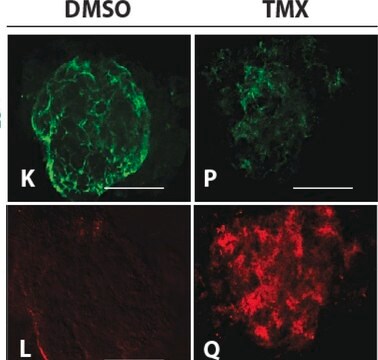V2258
Monoclonal Anti-Vimentin antibody produced in mouse
clone LN-6, ascites fluid
Synonym(s):
Anti-F5H288
About This Item
Recommended Products
biological source
mouse
conjugate
unconjugated
antibody form
ascites fluid
antibody product type
primary antibodies
clone
LN-6, monoclonal
contains
15 mM sodium azide
species reactivity
pig, mouse, sheep, human, bovine, rabbit, feline, rat
technique(s)
immunohistochemistry (formalin-fixed, paraffin-embedded sections): 1:200 using human tissue sections
immunoprecipitation (IP): suitable
indirect immunofluorescence: suitable using cultured cells
western blot: suitable
isotype
IgM
UniProt accession no.
shipped in
dry ice
storage temp.
−20°C
target post-translational modification
unmodified
Gene Information
human ... VIM(7431)
mouse ... Vim(22352)
rat ... Vim(81818)
General description
Specificity
Immunogen
Application
Biochem/physiol Actions
Disclaimer
Not finding the right product?
Try our Product Selector Tool.
recommended
Storage Class Code
12 - Non Combustible Liquids
WGK
nwg
Flash Point(F)
Not applicable
Flash Point(C)
Not applicable
Certificates of Analysis (COA)
Search for Certificates of Analysis (COA) by entering the products Lot/Batch Number. Lot and Batch Numbers can be found on a product’s label following the words ‘Lot’ or ‘Batch’.
Already Own This Product?
Find documentation for the products that you have recently purchased in the Document Library.
Customers Also Viewed
Articles
In the midst of beeping lab timers, presentations and grant deadlines, it is easy to take for granted the quality of lab reagents.
Our team of scientists has experience in all areas of research including Life Science, Material Science, Chemical Synthesis, Chromatography, Analytical and many others.
Contact Technical Service














